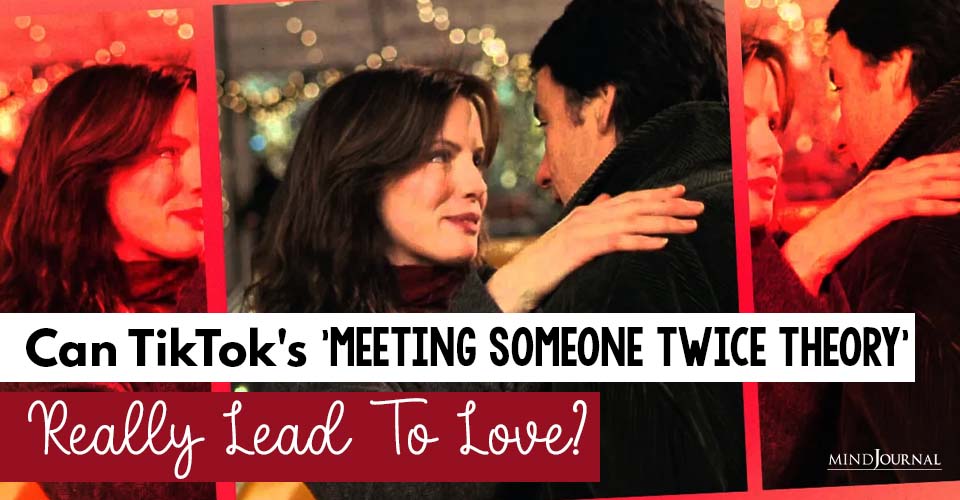When it comes to dating, there is still a lot of traditionalism regarding who should approach whom. But imagine if men and women reverse dating roles? What if the dating roles are reversed, and instead of the man approaching the woman, it’s the other way round?
Two people are out at a party. One is standing with friends, while another person approaches from across the room to strike up a conversation. Chances are, in this scenario, you imagined that it was a guy approaching a girl. Whether it’s in a social setting or online, we seem to expect men to make the first move.
Why? Well, we all have what psychologists call “behavioral scripts,” which are a sequence of events that we expect to typically occur in social situations. You have a script for how to act in a job interview, how to place an order at a restaurant, and how to cheer for a sports team.
Related: 3 Frustrating and Ridiculous Ways Men Test Women While Dating
Dating is no different. In most cultures, expectations about male and female dating behavior (such as “guys approach girls”) are fairly entrenched. A study of nearly 300 undergraduates found that if a man initiated a date, students felt both partners were interested (Reid et al., 2011). However, if the woman initiated the date, many (around 40%) saw the man as only doing it out of pity. When a woman initiates, it appears to violate some type of unwritten rule.
But we don’t always follow those rules. There are exceptions. For example, there are special days or events where we intentionally flip the script. On Sadie Hawkins Day (traditionally observed in early November—it falls on November 13th in 2020 and 2021) or at a Sadie Hawkins Dance, women have the opportunity to invert social convention by asking men out on a date or to a dance.
Researchers have examined speed dating to help them better understand dating’s underlying scripts and expectations (Finkel & Eastwick, 2008). Speed dating is a structured way for daters to meet a lot of people quickly. The typical speed-dating event features women sitting at various locations around a room, often a coffee shop or bar, while men circulate and chat with each woman for a few minutes. A signal will then indicate that time is up and the men should move along to the next woman.
The process repeats until everyone at the event has “dated” each other. Later, the male and female participants let the event organizer know which partners they would like to see again. If the male and female indicate mutual interest, the organizer gives them each other’s contact information. If done efficiently, a speed dater could meet over a dozen potential dating partners in less than an hour.
The typical speed-dating event relies heavily on the “male approaches female” norm. Consistent with the norm, speed-dating research reveals that women are pickier than men when indicating interest in potential partners (Todd et al., 2007). That is, women say “yes” much less frequently than men, with men indicating interest in roughly half the potential partners and women indicating interest in only a third (Kurzban & Weeden, 2005).
However, other researchers wondered if what seems like a clear-cut gender difference, truly was a gender difference, or if the social situation was the actual cause (Finkel & Eastwick, 2009). Specifically, they investigated whether women were pickier because they got to sit in one place, while men had to work their way around the room.
To test this, they had more than 300 undergraduates participate in speed-dating events. In half of those events, participants engaged in the standard speed-dating procedure where men circulated while women stayed in one place. For the other events, men and women performed a Sadie Hawkins-like role reversal: men stayed in one place while women circulated around the room.
In the standard “men rotating” events, the researchers replicated previous findings (and the prevailing stereotypes) that women were pickier about who they liked relative to men. But in the non-standard “women rotating” events where men and women reversed roles, the researcher found the exact opposite pattern: men were picky, whereas women were less selective. Put another way, there was a “Sadie Hawkins Effect.”
When women were forced to go from man to man during the speed-dating event, they debunked the gender stereotype by showing an interest in more of the potential partners.
These findings show how a widely assumed gender difference — women are picky about who they date, while men aren’t — maybe an artifact of social situations. Men may be less picky not because they are men, but because societal norms require them to do most of the approaching in dating scenarios. Women’s selectivity, meanwhile, might arise from their essentially arbitrary role as “selectors.” In other words, when lots of potential suitors regularly approach you, it’s a lot easier to be picky.
Related: The Top 9 Biggest Turn-Offs For Men When Dating
This brings up a much broader point: it’s simple to assume that men and women behave very differently because of evolved, inborn differences. Research on the Sadie Hawkins effect shows how careful we should be to avoid assumptions about gender differences, and how we may not need to look far for other potential explanations. Situations are powerful influencers that we too easily overlook.
Check out the new book of Gary W. Lewandowski Jr., Stronger Than You Think: The 10 Blind Spots That Undermine Your Relationship…and How to See Past Them, to know more about relationships, and how to handle them.
References:
Reid, J., Elliott, S., & Webber, G. (2011). Casual hookups to formal dates: Refining the boundaries of the sexual double standard. Gender and Society, 25(5), 545-568. Finkel, E. J., & Eastwick, P. W. (2008). Speed-dating. Current Directions in Psychological Science, 17(3), 193–197. Todd, P. M., Penke, L., Fasolo, B., & Lenton, A. P. (2007). Different cognitive processes underlie human mate choices and mate preferences. PNAS Proceedings of the National Academy of Sciences of The United States of America, 104(38), 15011-15016. Kurzban, R., & Weeden, J. (2005). HurryDate: Mate preferences in action. Evolution and Human Behavior, 26(3), 227-244. Finkel, E. J., & Eastwick, P. W. (2009). Arbitrary social norms influence sex differences in romantic selectivity. Psychological Science, 20(10), 1290-1295.
Written By Gary W. Lewandowski Jr. Originally Appeared In Psychology Today









Leave a Reply